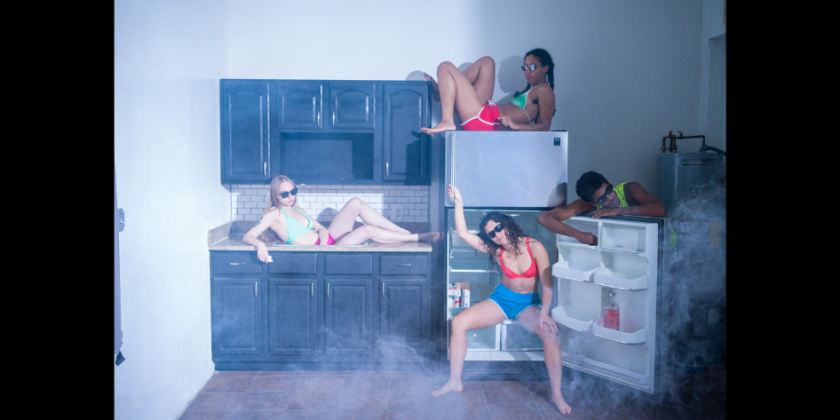IMPRESSIONS: Triskelion Arts Split Bill #42 with Rebecca Margolick and Kashia Kancey
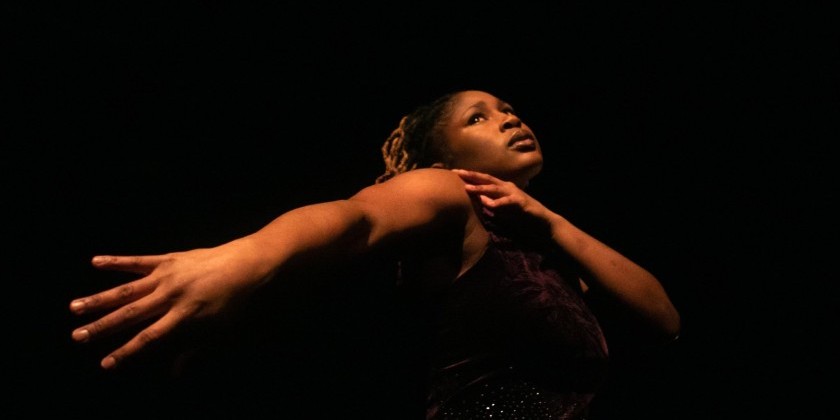
Reservoir
Choreographer and Performer: Rebecca Margolick
Composer: Jonathan Goulet
Costume Alteration: Deloris Onwuka
Lighting Design: Anna Wotring
I Believed It Too
Choreographer: Kashia Kancey
Performancers: Kashia Kancey, Alondra Balbuena, Kyla Thomas and Lakeria Robinson
Sound Editor: Cristina Moya-Palacios
Lighting Designer: Anna Wotring
Date: March 14, 2024
The intimate and inviting Triskelion Arts presented “Split Bill #42” on March 14th and 15th , 2024. Rebecca Margolick’s Reservoir and Kashia Kancey’s I Believed It Too premiered in this latest iteration of the theater’s Split Bill Series, which brings together pairings of emerging NYC-based dance artists to create new work.
Reservoir immediately tangles its viewers in its ominous cloud. Margolick stands hunched over, draped in a long, elegant dress sparkling amidst the dark lighting. Her hair hangs, hiding herface. She inches her way downstage, tracing the floor with her toes, her palms outstretched. Her fingers curl and uncurl as her wrists invert, and she stretches her upper extremity into contorted shapes.
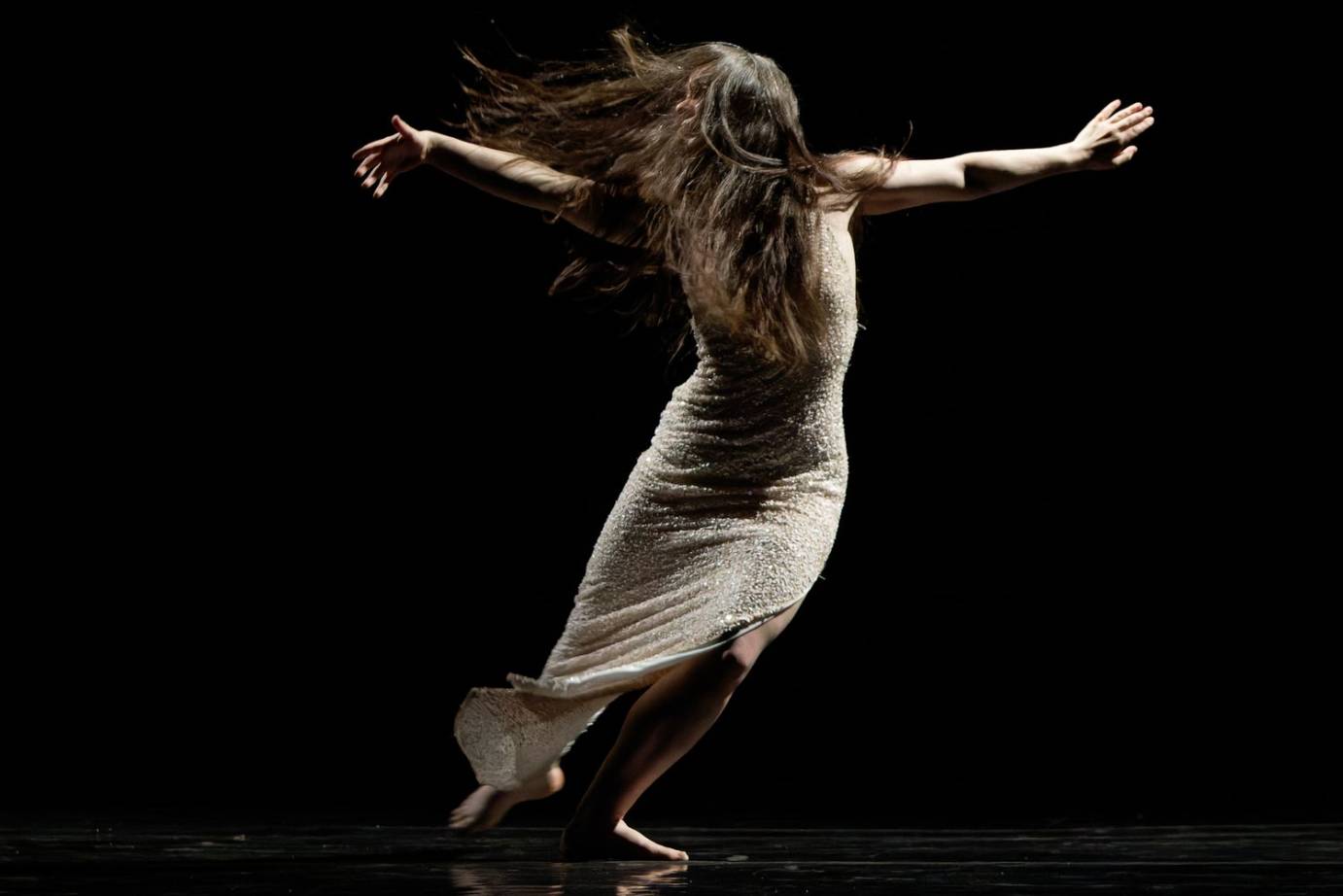
Her character’s image is inspired by the Dybbuk, a possessive spirit in Jewish mythology. In Reservoir, this wandering spirit inhabits the body of a woman, and Margolick builds the character with movements inspired by Yiddish folk dance melded with contemporary forms. Her feet flick, stomping the earth as she slaps her skin. She skips, darts, and swoops across the stage. Her dancing reaches a frenzied tempo, yet she maintains a certain regality. The haunting music swells.
Margolick pauses in the downstage right corner, briefly revealing her face before sinking to the floor and dragging her body across the stage. Sitting upright, she pulls her dress halfway off. The dress’ fabric covers her face as phantom-like voices echo around her.
As the lights beam, Margolick fully removes her dress, cradling the fabric in a ball in front of her chest. She pushes her hair away from her face and gazes outwards. Appearing calm and resigned,she soon switches to a darker expression. Rising, she begins undulating while holding the balled-up dress. She lunges through the space, scooping her hands from the earth towards her mouth. She pauses in the center and repeats her scooping for what feels like several minutes. It is a lasting, striking image of consumption.
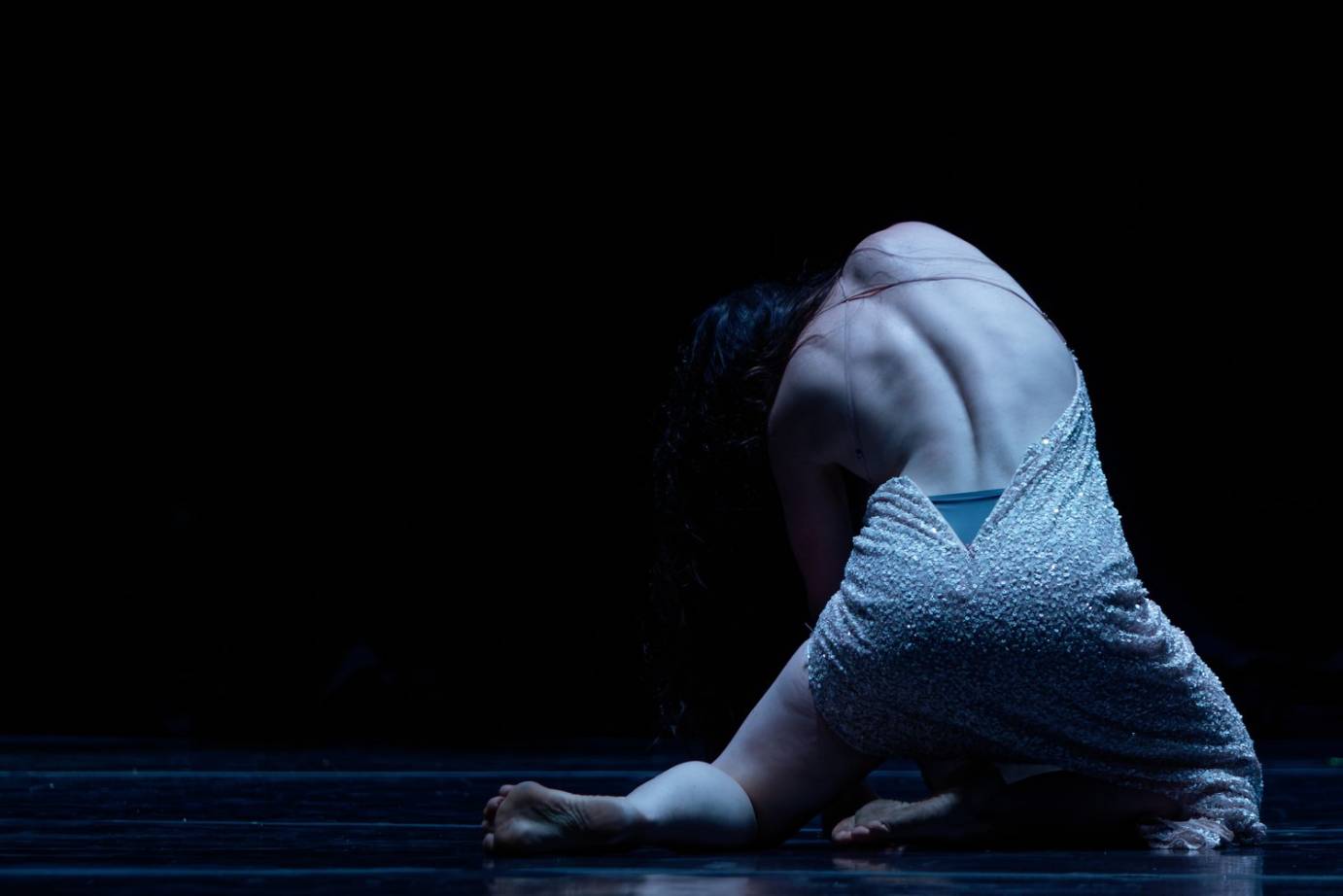
Settling, Margolick delicately places her dress on the floor and dresses herself in a black shirt and black pants. With her hair fully away from her face, she repeats Reservoir’s opening movement. The slow traveling downstage with flickering fingers morphs into fast-paced, vigorous dancing. Margolick’s exhales are audible as the lights fade to black, inviting viewers to ponder the transformation of her character’s spirit.
Kancey’s I Believed It Too radiates the power from within. Kancey’s character, with the support of Alondra Balbuena, Kyla Thomas and Lakeria Robinson, acknowledges false fronts put on in front of others. The dance invites viewers to remember their values and authenticity.
The narrative of putting on a show for others appears from the get-go. A microphone stands center stage. A disco ball hangs from the ceiling. The lights rise, revealing Robinson dressed in a long, sparkling gold dress, partially hidden behind the curtains. Kancey stands in the downstage right corner wearing a long, purple dress. The percussive music, edited by Cristina Moya-Palacios, drives Kancey as she masterfully embodies its lively timing. She tosses her limbs, flicking her hands and sweeping her arms. Her hands ball into fists and smooth into blades. Tossing her energy outwards, her moments of stillness communicate as deeply as her dancing.
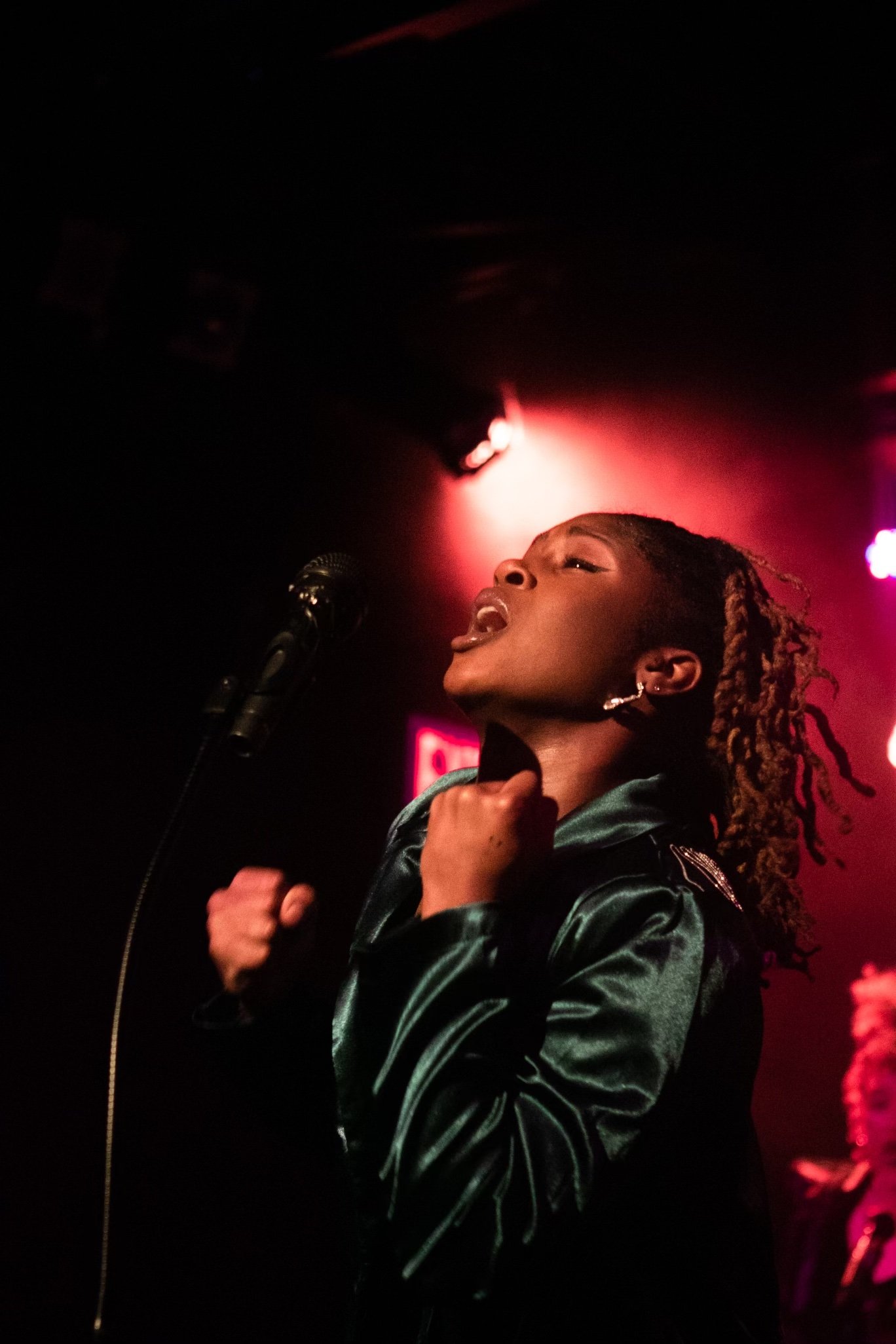
Kancey sinks to the floor. She approaches the microphone, and a crash booms through the space. Different soundscapes flood: a marching band, cheering, symbols – a lifetime of memories swirl through her character’s mind. She wrestles with these images, her movements hurtling against each symbol’s collision. with abandon, she appears agonized.
With a sudden shift, the lights black out. The disco ball lowers as a rainbow of color beams through the space. Kancey reemerges, dressed in a dark green blazer layered over a tank top and long pants flanked by Balbuena and Thomas. The trio approaches their microphones (now there is one in the space for each of them) and dances their hearts out. In crisp unison, they rock their microphones in their hands, leaning towards the audience. They swoop around in circles, ripples pulsing through their bodies.

The trio vocalizes. Cries of, “Here we go!” and “Whoo!” reverberate as they jump through the air and kick their legs. The audience, on the edges of their seats bobbing to the music, whoops and cheers with them as the lights fade.
When the lights return, Kancey stands alone facing her sole microphone. She jogs in place towards it, her speed frantically increasing. She sheds her jacket, tossing it to the floor. “Who gon’ save me?” she asks as she runs. Her volume is low at first, but crescendos as she repeats her question. Sprinting, she releases her energy and hurtles downstage with vulnerability and passion.
I Believed It Too concludes with a final solo concert – this time, a reflective ballad. Kancey strips her green garments and changes into a long, black gown. She adorns herself in heels, white gloves, and a sparkling necklace. As Shirley Bassey’s “The Greatest Performance of My Life” plays, Kancey lip synchs under the disco ball. Has she achieved the final version of herself she wants to project? Will she continue her performative nature? Explosive and expressive, the lights fade as Kancey offers her soul to the audience. The viewers are on their feet, erupting.
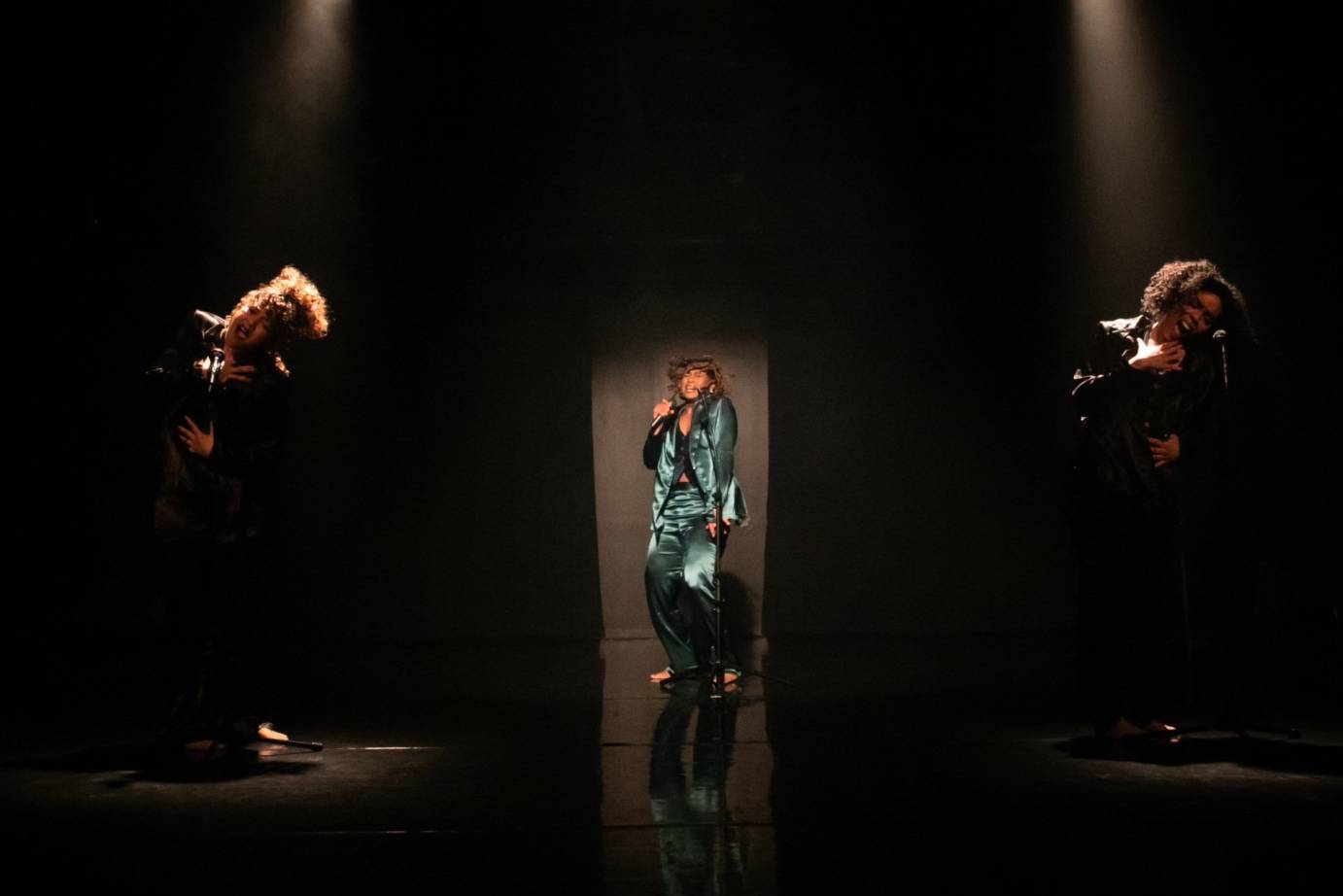
Both works depict the shedding a former self. In their own respects, the heroes of these two stories wrestle with the demons clinging to their souls. Reservoir and I Believed It Too emphasize the importance of celebrating the true self, holding steadfast beyond external attachments.





![IMPRESSIONS: [RE]DEFINING [SPACE] at Triskelion Arts](/images/features_small/3_Trisk_day_3_selects_by_caroline_alarcon_loor_064.png)



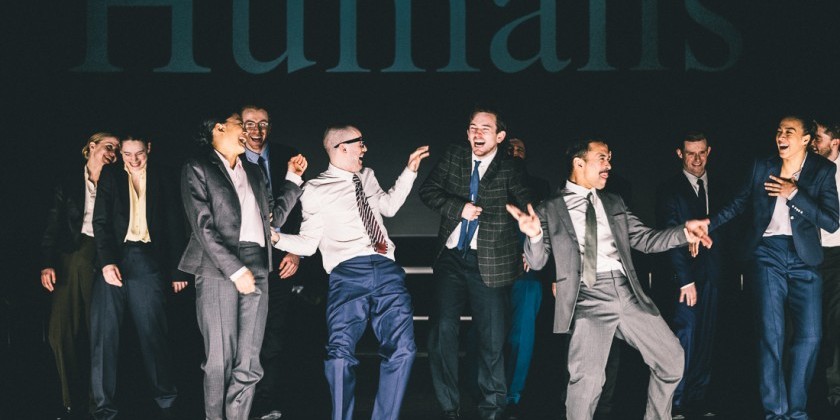
![IMPRESSIONS: Will Rawls' “[siccer]” at the Keith Haring Theatre at Performance Space New York](/images/features_large/20251119_WillRawls_siccer_PerformanceSpaceNY_WhitneyBrowne--55.jpg)

